Introduction
The Nikon D3200 versus its competitors
The Nikon D3200 vs the Sony NEX-7 and the Sony SLT Alpha 77
Is the Nikon D3200’s sensor the same Sony APS-C Exmor HD Sony found in the NEX-7 and the SLT-A77 SLR? There is little doubt that this is the case, but let’s look at all the measurements to be sure.
With its DxOmark Score of 81, the D3200 is on the exact same footing as the NEX-7, sharing the same 24.1-bit measurement for color depth as the Sony hybrid (with the SLT-A77 coming in close behind at an even 24 bits). Its dynamic range is of a piece with color depth, with a score of 13.3EV for the D3200 vs 13.4EV for the NEX-7 (and 13.2 for the SLT-A77). The D3200 incorporates well the Sony 24 Mpix sensor that appeared as a star device at the IFA exhibition in Berlin in September 2011.
This said, looking at the curves of low-light ISO measurements, the Nikon’s score is very close to that of the NEX-7. As for the SLT-A77’s low-light score, its weak results are due to the camera’s translucent mirror system that consumes some of the light and generally reduces the sensitivity from 1/3 to 1/5 EV (see the Sony SLT-A57 sensor review).
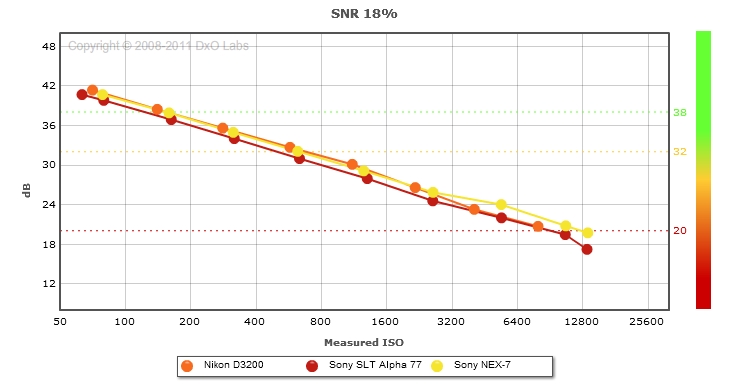
The Nikon D3200 pitted against the Canon EOS 600D
The scores achieved by the Nikon D3200’s 24 Mpix sensor are better than those of the Canon EOS 600D for all measured criteria. With its DxOMarkscore of 81 vs. only 65 for the Canon EOS 600D (67th position among all cameras measured by DxOMark), the D3200 is among the overall Top 10.
- Color depth: with 24.1 bits, the D3200 is 2 bits better than the Canon EOS 600D.
- Dynamic range: the curve shows that the Canon APS-C’s 18 Mpix sensor slows down and ultimately stops making any progress at all from 800 to 400 ISO, whereas the Nikon’s Sony sensor continues to broaden the range of tones captured by the D3200 to finally reach, at 100 ISO, a cruel difference of nearly 2EV better than the Canon (11.5EV vs 13.2EV for the Nikon).
- Low-light ISO: Despite its sensor’s greater resolution, the Nikon D3200 provides low-light image quality that is better than the Canon’s by more than a demi-diaphragm.
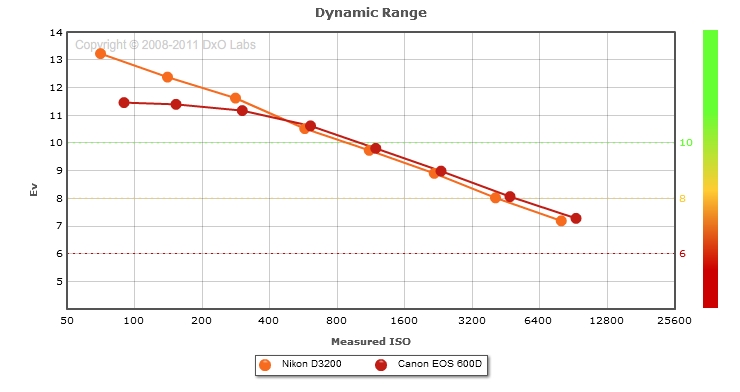
The Nikon D3200 offers a good compromise among image quality, price, and ergonomics for aspiring photographers. There is no real equivalent in this category in today’s market, given that the old Canon EOS 600D or 1100D cameras may soon be replaced. In terms of image quality or sensitivity, it competes with the Sony NEX-7, but this last follows a radically different philosophy: reflex vs. hybrid, amateur vs. semi-pro ergonomics, optical reflex vs. OLED viewfinder — and at a significantly higher price.
The D3200’s 24 Mpix Sony CMOS sensor brings with it some real pluses: high resolution and an extended dynamic range. For as much as we salute Nikon’s bold strategy of putting the best sensors into cameras designed for the general public, we cannot help but regret the quality of the JPEGs that the D3200 generates, which seems a priori below that of its competitors… due to the limitations Nikon has imposed on its software. This said, with a good RAW converter, the D3200 will provide image quality as good as that of an expert-level camera.
See also:
DxOMark review for APS-C cameras 2010: who takes the lead?
Nikon D3200 Review at DPReview
For all their external similarities, however, Nikon didn’t simply tinker around with the D3100’s innards to come up with the D3200— on the contrary, both the sensor and the processor in this new SLR are very different indeed.
Nikon D3200 Preview
Nikon D3200 Sensor Performance
Nikon D3200 Versus Competition
Conclusion

24-megapixel CMOS APS-C sensor
Nikon endowed the D3200 with the 24-megapixel CMOS APS-C sensor that had already created a buzz with the Sony NEX-7, SLT-A77, and SLT-A65. Thus Nikon has created an advanced if still entry-level reflex camera that puts a high-definition APS-C sensor into the hands of amateurs for family use (or perhaps into more expert hands on a tight budget).
According to Nikon, the D3200’s 24-Mpix sensor is not exactly the same as found in Sony cameras, but rather one that has been revised according to Nikon’s specifications. We know that Nikon has quite consistently obtained better signal results from Sony sensors than the sensor manufacturer has been able to achieve with its own Sony cameras (see the performance of the Nikon D7000 vs Sony Alpha 580, for example). We do wonder, however, if users will be able to take full advantage of the greater resolution because of the kit lens Nikon has chosen to supply (i.e., the AF-S DX 18-55mm VR). However, judging from the first images that Nikon has produced, the gain in resolution appears to be striking. We are anxious to measure the D3200 against its predecessor, yes, but we’re even more impatient to see how it performs against the famous 16-megapixel sensor of the Nikon D5100.
Finally, with its sound modern design, the D3200’s sensor can be pushed from 200 to 6400 ISO (extendable to 12,800 ISO).
EXPEED 3 upgrade
How can an amateur digital camera digest 24Mpix files? The answer is obvious: by integrating one of the latest generation processors found in professional cameras, the EXPEED 3 — the same processor that reigns supreme in the Nikon D800. The new processor boosts the D3200’s signal processing speed (noise reduction, demosaicing, application renderings, etc.), as well as improves the exposure metering, scene recognition (retaining the small 420-pixel RGB sensor), and the autofocus delay (same 11-collimator module as the D3100). One has every reason to expect a much better performance in real-time autofocus in video mode.
And thanks to its EXPEED 3 processor, despite its 24Mpix sensor, the D3200’s burst shooting speed increases to 4 i/s (vs 3 i/s for its older sibling).
More advanced video mode
The D3200’s video mode has been enhanced by the ability to turn off certain automatic functions: now it can be used in aperture priority mode or in completely manual mode. Even though it’s still not possible to change the aperture on the fly (being a mechanical shutter and all), clearly Nikon took videographers’ needs into account. Similarly, the D3200’s Full HD video rate can stay at 24p as with the D3100, but it also shoots at 25p and 30p. Finally, the D3200 moves into the ranks of the HDSLRs, thanks to the addition of a microphone jack.
Viewfinder and screen
The D3200 retains same small optical viewfinder as the D3100. A bit skimpy, coverage still in need of improvement… but cheap and compact. The D3200 is still an inexpensive camera and the viewfinder makes that abundantly clear. However, Nikon grafted the same 3-inch / 920,000-point touchscreen found on its pro cameras this year onto the D3200, including the resin layer that displaces air and mitigates reflections. The screen is, however, immobile, Nikon having reserved the articulated screen for its D5100 model (for which we can certainly envision a version D5200 with a 24-megapixel sensor — but we digress). The D5100 is certainly going to suffer from the appearance of the D3200 on the market.
V3 Guide: graphics
More versatile than the D3100 with which it will cohabitate, the D3200 can be used in more advanced photographic situations. But its principal vocation will still be as a camera for use by amateurs (shooting family events, recreation, leisure, etc.), and for this specific audience, Nikon has revised its instructional guide and judiciously replaced the textual explanations with narrative images that illustrate the effects that a beginning photographer would want to achieve.
Connectivity and Wi-Fi WU-1a module
The Nikon D3200 comes with a microphone input, a new USB/Audio-video port, an HDMI-CEC connector to enable controlling the camera using one’s TV remote control, and a plug for a Nikon GP-1 GPS module. The most important new feature in terms of connectivity is that the D3200 will be sold with a small Wi-Fi module the size of a sugar cube, the WU-1a. This connects via the USB port and allows the D3200 to connect to a WiFi network or to automatically upload photos to a smartphone (with the resolution set upstream). An Android application will also allow users to remotely control the D3200 with their smartphones — both setting the parameters of their shots and shooting. Compatibility with iOS devices (iPhone, iPad, and iPod Touch) should follow.
Price and availability
The Nikon D3200 will start to appear on the market at the end of May or beginning of June, just in time for the peak of summer season shopping. The D3200 will be sold in a kit with an AF-S Nikkor DX 18-55mm VR lens at a price of 699 euros. The extra cost of the D3200 with respect to the D3100 will be around 200 euros. The D3100 will also see its price drop — sold in a kit with the same lens at 499 euros.
The Nikon D5100 goes for 649 euros today, but its price could drop as well.
Main technical features of the Nikon D3200
- CMOS APS-C sensor (24.2 effective megapixels)
- 200 to 6400 ISO sensitivity (extendable to 12,800 ISO)
- 11-point autofocus
- Color matrix meter II (420-pixel RGB sensor)
- DIGIC 3 processor
- 12-bit RAW sampling
- Shutter speed: 30 to 1/4000s
- Burst speed: 4 i/s (if shutter speed is > 1/250s)
- Video mode: 1080/30p, 25p, 24p with manual exposure at full-time AF
- Audio input (Linear PCM recording)
- Integrated flash: guide number 12, i-TTL
- Viewfinder: pentamirror, 95% coverage, 0.8x magnification, 18mm eyepoint
- 3-inch / 921,000-point antireflective screen


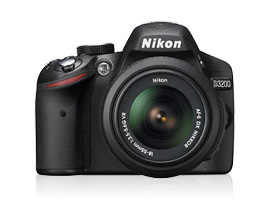


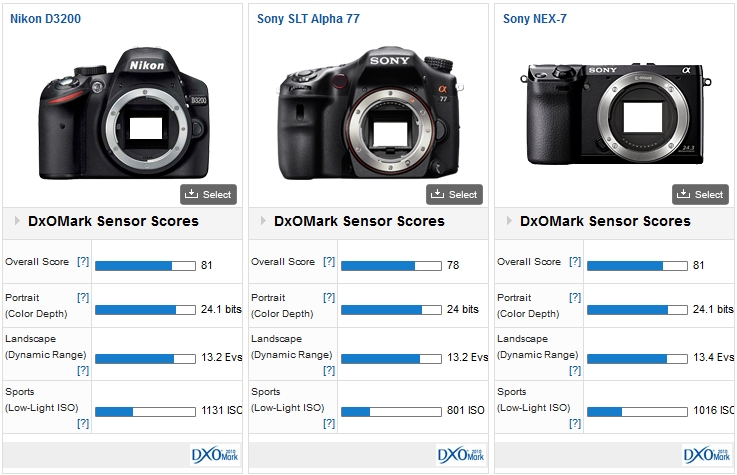
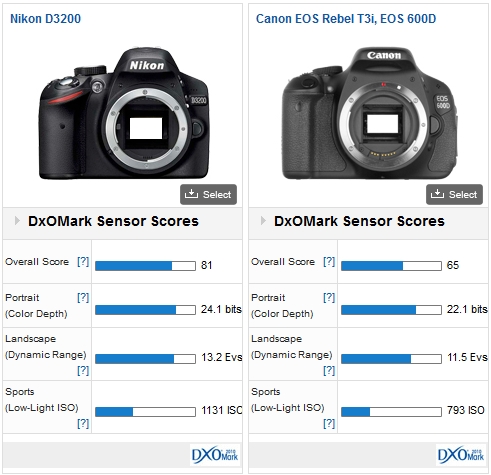
DXOMARK encourages its readers to share comments on the articles. To read or post comments, Disqus cookies are required. Change your Cookies Preferences and read more about our Comment Policy.